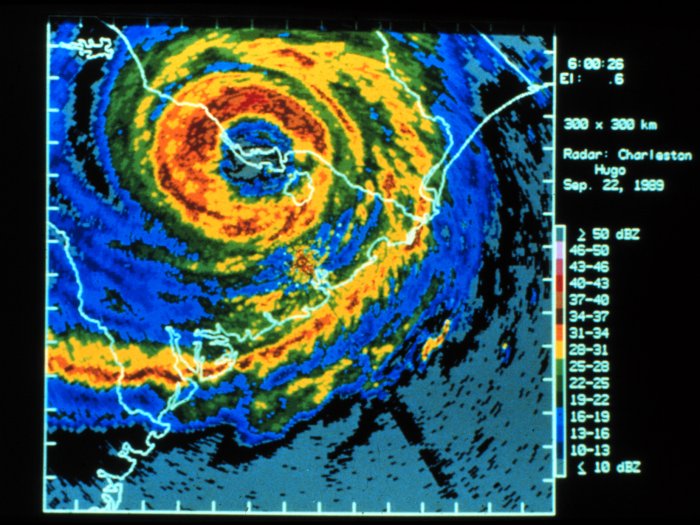
Home > Weather Instruments > psychrometer
|
||||||
Using Sling PsychrometerThe sling psychrometer is a type of hygrometer, or device to measure moisture in the air. The sling psychrometer consists of two mercury thermometers mounted together with a handle attached on a chain.
When ready to take a reading, the observer first dips the "wet bulb" into clean water. Then the observer grasps the handle and whirls the psychrometer around, causing the air to quickly dry the wet bulb. The evaporation of the water on the wick causes cooling to occur. The cooling is measured on the wet-bulb thermometer. When the wet-bulb temperature has reached its lowest point, the observer reads both wet-bulb and dry-bulb thermometers. The wet-bulb temperature is subtracted from the dry-bulb temperature to determine the depression. This information is used to determine the Dew Point or Relative Humidity. If the ambient air is dry, the thermometer will cool to a lower temperature than if the air is most, so the larger the difference between the two temperatures, the dryer the air. You can make your own Sling Psychrometer by finding two (non-mercury) thermometers; a sturdy support (ruler, wooden dowel, piece of vinyl, wood, or similar); thick rubber bands or strong duct tape; a piece of cotton shoestring; thread; and strong string or cord. Drill a hole through the top of your support and securely attach the cord through the hole. The cord is what you will hold in your hand when slinging to psychrometer. Using duct tape or rubber bands, attach the two thermometers to your support, one on each side of the support. It is critical that you make sure the thermometers are SECURELY attached. You do not want them to fly off the psychrometer when you whirl it around. The wet-bulb thermometer bulb should extend lower than the dry-bulb thermometer. If you want to get fancy, you can attach the cord to a handle made from a piece of dowel with an eye-screw on the end. Now that you have your sling psychrometer made, cover the wet-bulb with the muslin shoe string and tie it to the bulb with thread. Dip the web-bulb thermometer into the clean water, hold the sling psychrometer away from your body at arms length and whirl it around for about 10 seconds. This whirling aspirates the thermometer, encouraging evaporation in the wick. Note the wet-bulb temperature and whirl again for another 10 seconds or so. Check the wet-bulb temperature again. Continue to do this until you are certain you have reached the lowest wet-bulb temperatures. When you have reached the lowest wet-bulb temperature, read the dry-bulb temperature as well. Subtract the wet-bulb reading from the dry-bulb reading to find the difference. Use this information to determine relative humidity. If you have a dew point table you can use this information to find the dew point. Also click HERE to view Psychrometric calculator information and HERE for information on recording temperature and dew point
| ||||||
Home > Weather Instruments > psychrometer
|

"I'd worked as an observer for years, but needed to re-certify. I learned more in this course than I ever imagined I could and I passed the exam with flying colors. I am also definately a better observer" TS, Louisiana
I knew nothing about weather at all. My new job depended on passing the weather observer certification test. Thanks to the patience and personal attention you gave us all, the entire class passed. JB, Texas
"When my company sent me to this class I thought I didn't need the training. I was wrong. Thanks" RB, Texas
You are the "Gold Standard" of teaching. Absolutely the best teacher I have ever had. DG, Louisiana

Copyright 2007 -2010 all rights reserved

 Twitter
Twitter Technorati
Technorati Stumbleupon
Stumbleupon Google Bookmarks
Google Bookmarks Facebook
Facebook Digg
Digg Blogmarks
Blogmarks Delicious
Delicious BlinkList
BlinkList Yahoo My Web
Yahoo My Web